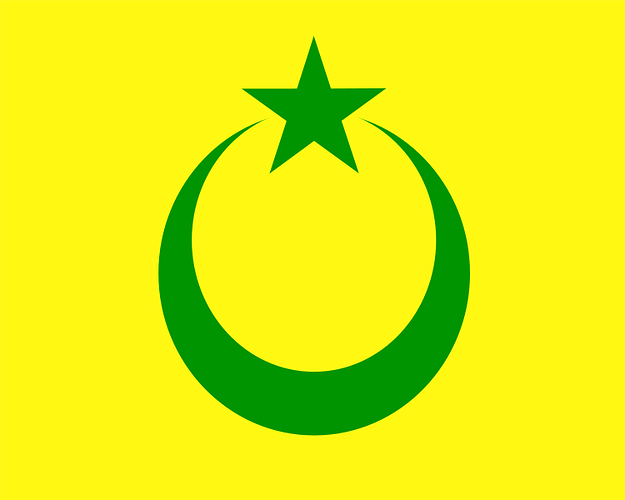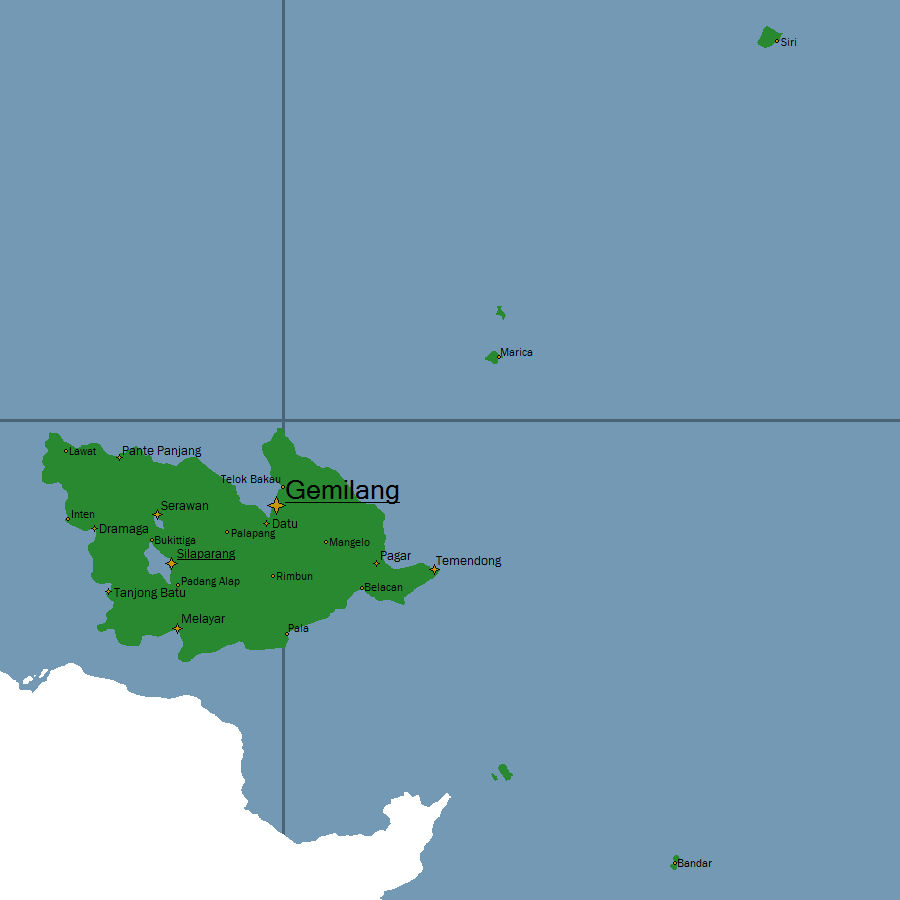Flag:
Nation Name (long): Sultanate of Baruna/Gemilang Sultanate
Nation Name (short): Baruna/Gemilang
Motto: Gilang Gemilang (Shining Victory)
National Animal: Cerenerian Tiger (Panthera Rekomis)
National Flower/Plant: Bungo Busok (Patmae Arnoldii)
National Anthem: Hiyang Peliharakan Kami (God Save Us)
Capitol: Gemilang (national/financial/executive/judicative), Silaparang (ceremonial/royal/legislative)
Largest City: Gemilang
Demonym: Barunian (Nationality), Barunese (Ethnicity)
Language: Barunese, Staynish
Religion: Alqamarism, Hyangism
Species: Humans, Dwarfs, Felines, Nekomimis
Population: 38 millions
Government type: Unitary Parliamentary Constitutional Monarchy
Leader(s): Hassan Al-Mukaromah (Sultan/Datu Agong), Ridwan Al-Sarawani (Vizier/Toan Agong)
Legislature: Balai Agong
Formation: 1789
Total GDP: $950 billions
Economic Sector: Resources Extraction (Oil, Gas and Coal), Agriculture (Farming and Fishery), Manufacture (Vehicle and Machinery), Tertiary (Finance and IT)
GDP per capita: $25,000
Currency: Denar (main), Kepeng (fraction)
Calling Code: +60
ISO 3166 code: BN, BRN
Internet TLD: .bn
Driving side: right
Historical Summary: Aborigin dwarfs settled on the island of Baruna since 2nd Century BCE and then around 5th Century CE human Polynesian tribes settled and mixed with locals, creating new culture. Then they formed their own local entity called Tatoan led by Tatoa (elder). They formed a political unity for the entire island led by Datu (High King) but sooj turned into chaos as they fight each others to gain those title.
Around 12th Century the tribal wars resulted into division of the island into 4 regional entity based on their tribal coalition: Gilang, Mudra, Rawan, Layar. They both fighting each other and Gilang emerged victorious and establish capital at Datu. After long period of isolation the Gilang tribe opened the island for outsiders, resulting on many other tribes, mostly feline and nekomimi traders, settled on the new Datunate of Baruna. Soon the rich and powerful traders influenced local custom and created religion alongside culture. Unsatisfied with the effects the Rawan tribe, the archnemesis of Gilang, declare war and the civil war begin. They successfully occupied the fortress town of Sanggar, which is destroyed by fires. The Rawan tribe rebuilt the castle and town and renamed it Silaparang, and due to the strategic location, set the capital here.
The victory of Rawan rebels started the long period of isolation but also the rapid advance of arts like literature. not long after Gondwanan traders and explorers came to the coast of Gilang, the original small town home of Gilang tribes. Soon the small city flourished and even became bigger, giving more retribution to the local Galang rulers. Again the clashes between isolationist Rawan lords, supported by most nobles and feline traders, against Gilang lords, supported by most people and Gondwanan traders, began to crack. This erupted into another civil war which is won by Gilang side. The Gilang Tatoa, Balaputra Gilang, illegitimate but eldest son of Mahadatu Putra, successfully taking the throne and establish the Sultanate of Gemilang, which also the name of the country till the 1923 Constitution, which renamed it Baruna like it’s predecessor states

